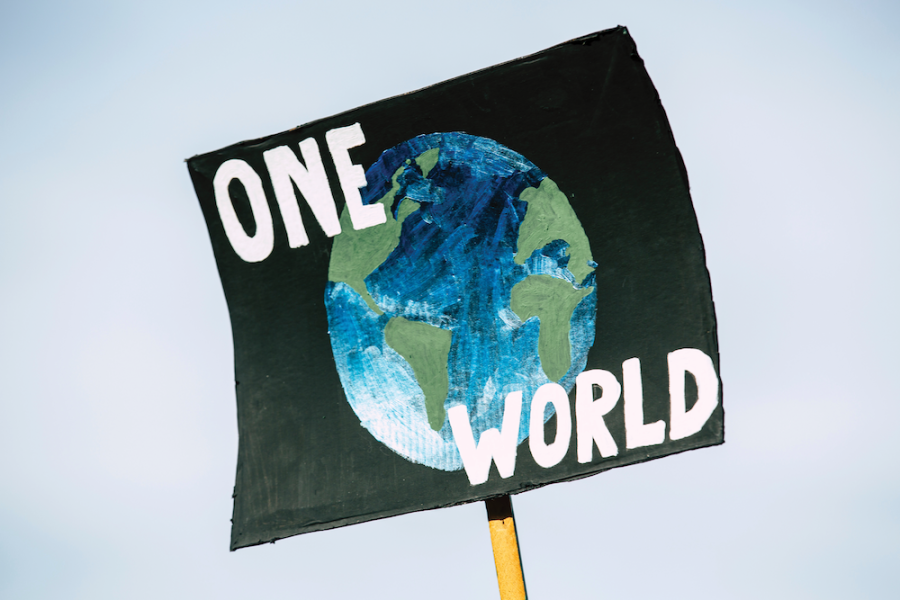The bigger threat: climate change
Feb 20, 2023
Climate change is one of the most divisive issues in our world today.
Activists have protested by throwing food on art as a way to protest climate change. Lawmakers pass laws affecting all kinds of aspects of our economy in the name of climate change. Fear of climate change can even cause anxiety for children, according to a study by Frontiers in Psychology. But how serious is the problem?
Perceptions of the threat of climate change
Many of the groups targeting art as a way to draw attention and make protests public believe strongly that climate change is a dire threat. According to an article by Sian Cain in The Guardian, members of the group “Just Stop Oil” said, “What is worth more? Art or life? Is it worth more than food? Worth more than justice? Are you more concerned about the protection of a painting or the protection of our planet and people?” The names of the groups themselves tell you how much of a threat they consider climate change to be, which includes groups like “Extinction Rebellion” and “Last Generation.”
However, most American voters are not as concerned about climate change. In an article about CNN polling before the midterm elections of 2022 by Ariel Edwards Levy, climate change was last among seven key issues CNN asked about in an earlier poll, with only 38% of registered voters suggesting it was extremely important. In a Pew Research Poll conducted in January 2022, climate change was behind 13 other issues in the percentage of Americans who viewed it as a top priority for President Biden for the year. Are the activists overreacting, or are American voters not as concerned as they should be?
There is evidence that the climate could be warming, and that warming could be human caused. However, the severity and effects of that warming is what is often questioned. Is it really an “existential threat,” as activists and politicians put it? Or is it a much smaller problem? This is important to consider, because if it is an existential threat, then massive changes in our economy and way of life could be justified to avert that catastrophe. However, if it is not, then such actions are more harmful than helpful.
The Inflation Reduction Act and other climate legislation
The Inflation Reduction Act, for which cost estimates were about $700 billion, was passed in August of last year. At a time when inflation was and still is impacting Americans, this bill was praised by some as a way to combat inflation. However, the Congressional Budget Office estimated that it would only impact inflation by about 0.1%, having a negligible effect on inflation. If you read the White House statement on the deceptively-named Inflation Reduction Act on Dec. 15 you will notice that it focuses mostly on the climate gains made by the bill. Inflation has also been blamed on high gas prices, which have been attributed to restrictions on oil drilling and production.
Many of the steps taken by the Biden administration and various states have done harm to the U.S. economy in the name of reducing the effects of climate change. Furthermore, wind and solar energy have not yet proven that they can be reliable sources of energy for the entire U.S. power grid. The rush to make the U.S. carbon-neutral could cause energy shortages, at least in the short term.
The United States’ diminishing impact on global carbon neutrality
Also, there is a question of how much the U.S. becoming carbon-neutral would actually affect global climate change. Currently, the U.S. is among the world leaders in global emissions. According to the EDGAR database of the European Union, the United States produced about 12% of global carbon dioxide emissions in 2021. However, the United States decreased its emissions from 2019 to 2021. On the other hand, China produced almost 33% of the world’s emissions and has increased since 2019. India and Russia produced about 7% and 5%, respectively, and increased production since 2020 by 10.5% and 8.1%. Even if the United States continues to decrease its carbon emissions, it seems likely other increases will surpass that decrease, limiting its effect.
Are natural disasters increasing?
Those who support the notion of a climate catastrophe are quick to explain how it causes more natural disasters, such as wildfires and hurricanes. However, a lot of factors go into hurricane development. For example, the U.S. recorded the longest streak in recorded history without any
Category 3 or 4 hurricanes landing on U.S. soil from 2005 to 2017. 2017 saw several major hurricanes, such as Irma and Harvey. Temperature patterns in the Pacific Ocean also have a large effect on Atlantic hurricanes. The reason for the presumed increase in powerful storms is that an increase in temperature allows more water to be held in the air, which would increase rainfall. The number of wildfires has actually decreased, though researchers suggest that the intensity of wildfires has increased. Part of this problem may be due to bad procedures by the federal government following wildfires, according to an article in NBC Bay Area. The truth is, these are complicated problems caused by a variety of factors and cannot be attributed only to climate change.
The difficulties of predicting the future
The biggest problem with the idea of a soon-coming climate catastrophe is its reliance on models predicting the future. Furthermore, they often try to predict what people will do in the future, while people are unpredictable. Predicting the future is not easy to do. Richard McSnider and John Christy, Professors of Atmospheric Science at the University of Alabama in Huntsville, estimate that models predicting climate change during the period from 1978 until 2014 suggested an increase of 3.8 degrees Fahrenheit per hundred years, compared to the actual increase of 1.3 degrees. Other predictions that are based on those of global temperatures, such as rising sea levels, may also be inflated as a result. Predictions in the 1970s and 1980s included some especially faulty predictions, such as warnings of a coming Ice Age and massive deaths of people due to pollution and starvation. In some cases, the opposite has happened, with a population increase but not the expected deficiencies that were supposed to come with it. While predictions are useful, making drastic decisions based on them is often harmful.
The importance of the free market in dealing with climate change
In some ways, a free market is very beneficial to dealing with these kinds of issues. When people are faced with a problem, such as shortages of natural resources, they innovate. They either find more through exploration or find alternatives. This was true with metal and oil. This also applies to many of the old predictions about starvation for an increasing population. New innovations have continually drastically increased yield potentials and production. When people have a problem such as pollution, they often find ways to reduce it.









